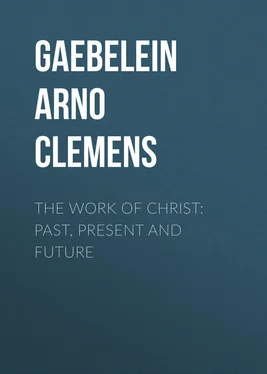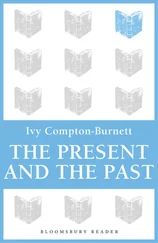Arno Gaebelein - The Work Of Christ - Past, Present and Future
Здесь есть возможность читать онлайн «Arno Gaebelein - The Work Of Christ - Past, Present and Future» — ознакомительный отрывок электронной книги совершенно бесплатно, а после прочтения отрывка купить полную версию. В некоторых случаях можно слушать аудио, скачать через торрент в формате fb2 и присутствует краткое содержание. Жанр: foreign_religion, foreign_antique, foreign_prose, на английском языке. Описание произведения, (предисловие) а так же отзывы посетителей доступны на портале библиотеки ЛибКат.
- Название:The Work Of Christ: Past, Present and Future
- Автор:
- Жанр:
- Год:неизвестен
- ISBN:нет данных
- Рейтинг книги:4 / 5. Голосов: 1
-
Избранное:Добавить в избранное
- Отзывы:
-
Ваша оценка:
- 80
- 1
- 2
- 3
- 4
- 5
The Work Of Christ: Past, Present and Future: краткое содержание, описание и аннотация
Предлагаем к чтению аннотацию, описание, краткое содержание или предисловие (зависит от того, что написал сам автор книги «The Work Of Christ: Past, Present and Future»). Если вы не нашли необходимую информацию о книге — напишите в комментариях, мы постараемся отыскать её.
The Work Of Christ: Past, Present and Future — читать онлайн ознакомительный отрывок
Ниже представлен текст книги, разбитый по страницам. Система сохранения места последней прочитанной страницы, позволяет с удобством читать онлайн бесплатно книгу «The Work Of Christ: Past, Present and Future», без необходимости каждый раз заново искать на чём Вы остановились. Поставьте закладку, и сможете в любой момент перейти на страницу, на которой закончили чтение.
Интервал:
Закладка:
Arno Clemens Gaebelein
The Work Of Christ: Past, Present and Future
THE WORK OF CHRIST
THE Word of God reveals, that all things were created by and for the Son of God. “All things were made by Him and without Him was not anything made that was made” (John i:3). “For by Him were all things created that are in heaven, and that are in earth, visible and invisible, whether they be thrones or dominions or principalities or powers; all things were created by Him and for Him” (Col. i:16). When this perfect creation was ruined by the entrance of sin, when man fell and all creation on account of that fall was brought into the bondage of corruption, the work of redemption became a necessity. No creature of God was fitted or fit to do this. Only the Son of God, the Creator Himself, could undertake this mighty work and accomplish it to the Praise and Glory of God. To do this great work, He had to appear on this earth in the form of man.
This work of the Son of God has a threefold aspect. It is a past work, a present work, and beyond the present, there is His future work. His work and service will terminate when He delivers up the kingdom, so that God will be all in all (1 Cor. xv:24-28). This threefold aspect of His work corresponds to His threefold office as Prophet, Priest and King. It has a special meaning for the church. In Ephesians v:25-27, we read of this. He loved the church and gave Himself for it; this is His past work. Since then He is sanctifying the church by the washing of water by the Word, and in the future He will present it to Himself, a glorious church. In virtue of this threefold work of our Lord, believers are saved, are being saved, and will be saved. This threefold work has also a significance for the people Israel. When He came and went to the cross, “He died for that nation” (John xi:42). During the present age His earthly people are not cast away; their miraculous preservation on earth, their continued, separate existence is due to Himself. In the future when He appears as their Redeemer and claims the purchased possession, He will turn away ungodliness from Jacob. And to this we might also add the relation of His work to creation itself, the nations of the earth, and to Satan and his rule.
These brief remarks show the importance of distinguishing between this threefold aspect of His work. A Christian who is ignorant of it must be confused in his conception of the truth. He is unable to understand the Word of God, and is unsettled, and even miserable in his Christian experience. Such, alas! is the present condition of a large number of professing Christians. Many are ignorant of what the finished work of Christ on the cross means. On account of this ignorance, they are ever trying to do what God has done for them. How many more are at sea about their position in Christ, and know next to nothing of the priestly work of Christ. The confusion is the greatest in respect to His future work as King. Our theme is therefore an important one. But even God’s people, who in a measure have laid hold of these truths, need constantly to be reminded of it and need to have all this through the Spirit’s power, as a greater reality in their lives.
I.
HIS PAST WORK
His past work was accomplished by Him when he became incarnate. It was finished when He died on Calvary’s cross. We have therefore to consider first of all these fundamentals of our faith.
I. The Work of the Son of God is foreshadowed and predicted in the Old Testament Scriptures.
II. The incarnation of the Son of God.
III. His Work on the cross and what has been accomplished by it.
I
Through the Old Testament Scriptures, God announced beforehand the work of His Son. This is a great theme and one which needs to be emphasized. These foreshadowings and predictions were made in different ways. First we might mention the appearance from time to time on earth of a supernatural Being. This Being was the Son of God. As soon as sin had entered, He appeared on the scene seeking those who were lost. He Himself announced the promise, that the seed of the woman should bruise the serpent’s head. He indicated in Genesis iii:15, His incarnation, His redemptive work on the cross and His final victory over the enemy of God. Then He covered the nakedness of His creatures by making them coats of skin. For the first time in the Word of God, it was made known by this act what the blessed fruit of His atoning work would be.
Manifestations of Jehovah
And the same Jehovah appeared in visible form unto Abraham. He came as traveller accompanied by two angels. He ate in the presence of Abraham, who worshipped and addressed Him as Lord. This Being was none other than the Son of God, the same who after His resurrection appeared to the two disciples on their way to Emmaus as a traveller, and who, at another occasion, ate of a honeycomb and a piece of fish. In His presence Abraham interceded. This Lord, who visited Abraham later, made fire and brimstone fall from heaven upon Sodom and Gomorrah; He executed judgment. He appeared unto Jacob and was the mysterious man who wrestled with him at Peniel; later Jacob called Him “The Angel, the Redeemer.” Repeatedly we hear of Him as “The Angel of the Lord,” not a created angel, but an uncreated Being. Moses saw Him in the burning bush, and heard His voice. And while He is spoken of as the angel of the Lord, He revealed Himself as Jehovah and made this Name known to Moses. He was with Israel in the wilderness and dwelled with them in the Glory cloud. He guided them, supplied their need, protected them, judged them and overthrew their enemies. To Joshua He appeared and manifested Himself as “The captain over the Lord’s hosts.” Manoah and his wife saw Him, and witnessed His ascension into heaven, in the smoke and fire of the sacrifice. Isaiah, Ezekiel and Daniel gazed upon His Glory. All these were but foreshadowings and glimpses of the two great manifestations of the Son of God on earth, as they are necessitated by His work, His manifestation in humiliation and His manifestation in power and glory.
Other Foreshadowings of His Work
But there are other foreshadowings of His work. All the divinely given institutions and many of the historical events recorded in the Old Testament foreshadow His work. History, as recorded in the Old Testament, is the preliminary history of the incarnation. The whole sacrificial system of the levitical priesthood told out beforehand, in many ways, what the great redemptive work of the Lamb of God was to be. Each offering and sacrifice revealed the different phases of His work on the cross, as well as His holy and spotless humanity. The sufferings of Christ and their meaning for lost sinners were thus made known. From Abel’s lamb to the last lamb, which died before the true Lamb of God uttered the never to be forgotten words on the cross, “It is finished,” the thousands of lambs and bulls and goats, the innumerable herds of animals slain, were all types of the one great sacrifice, brought on Calvary’s cross. The tabernacle in all its appointments, down to the minutest details, had I some meaning in connection with the Person of Him who is “Wonderful” and His wonderful work. And what else could we say of the historical events, such as the Passover, the passage through the Red Sea, the brazen serpent hung up in the wilderness. And to this we might add how men in their experiences, like Isaac, Joseph, David and others foreshadowed the sufferings of Christ and the glory that should follow.
Direct Prophecies
Still more numerous are the direct prophecies announcing the different phases of the work of Christ. That He should appear as man, how and where He should be born, His life, His service, His miracles, all was repeatedly foretold by the Prophets. But the great mass of predictions concern His sufferings as the sin-bearer and His glories as the King. None of the details of His sufferings were omitted. Think, for instance, of the predictions contained in the xxii Psalm. Death by crucifixion was unknown among the Jewish people. No nation in touch with Israel, living at that time, put human beings to death in that way. It was reserved for cruel Rome to invent death; by crucifixion. Yet in this Psalm there is given by divine inspiration a complete picture of that unknown mode of death by crucifixion. We read of His hands and feet pierced, the bones out of joint, the excessive thirst, the tongue cleaving to the jaws. And so we find His resurrection, His presence with God, His coming again and His Kingdom of Righteousness and Glory foretold in the Prophets.
Читать дальшеИнтервал:
Закладка:
Похожие книги на «The Work Of Christ: Past, Present and Future»
Представляем Вашему вниманию похожие книги на «The Work Of Christ: Past, Present and Future» списком для выбора. Мы отобрали схожую по названию и смыслу литературу в надежде предоставить читателям больше вариантов отыскать новые, интересные, ещё непрочитанные произведения.
Обсуждение, отзывы о книге «The Work Of Christ: Past, Present and Future» и просто собственные мнения читателей. Оставьте ваши комментарии, напишите, что Вы думаете о произведении, его смысле или главных героях. Укажите что конкретно понравилось, а что нет, и почему Вы так считаете.












